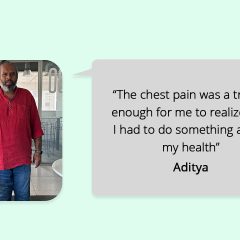 Being indoors for this long has given people a lot of time to do some research. If you have been researching fitness, weight training and muscles, I’m sure the thought of – “will my muscles turn into fat if I stop weight training” has crossed your mind. While you might watch your fitness levels, maintain a healthy weight and improve strength, etc, it is equally important to understand what happens once you stop weight training in order to preserve muscle mass.
Being indoors for this long has given people a lot of time to do some research. If you have been researching fitness, weight training and muscles, I’m sure the thought of – “will my muscles turn into fat if I stop weight training” has crossed your mind. While you might watch your fitness levels, maintain a healthy weight and improve strength, etc, it is equally important to understand what happens once you stop weight training in order to preserve muscle mass.
What Do Muscles Mean?
Muscle is a tissue in animal bodies. Their main purpose is to help us move our body parts. When a muscle is activated via exercise, it contracts, making itself shorter and thicker i.e. it grows in size.
- When you exercise, your body does not create new muscles. Instead, your existing muscles grow larger and stronger.
- With regular exercise, muscles also develop more mitochondria (this is where biochemical processes of respiration and energy production occur in the cell). The result is larger and more muscle mass.
- When you stop weight training/adopt a sedentary lifestyle, then the increased blood flow previously needed to fuel your cells during exercise is no longer required, so your body begins to contract and reduce the size of your capillaries. As a consequence, muscles shrink and decrease in mass.
Points To Consider
Muscle cells and fat cells are different structures and are not interchangeable at all. They will become smaller and weaker if you stop weight training because they lose muscle mass. Although, it will not happen in a short period of time as the process of losing muscle mass is slow and gradual which may take 4-6 weeks. Fat may be produced if your diet provides your body with more calories than required based on the activity levels you maintain.
You can preserve and maintain your muscle mass by keeping yourself active. By active I do not mean hitting the gym everyday but by just walking in between breaks, using the staircase instead of the lift, stretching your body every 2 hours, walking while being on a call instead of just sitting at one place, walking after every meal whether it’s your main meal or just snacks in between and obviously by eating a well- balanced healthy diet.
Keep an eye on your protein intake because the protein requirement of your body is directly associated with building and losing muscle mass as well. Don’t overtrain as this can also lead to decreased muscle. Leaving weight training alone should not be blamed for decreased muscle mass. 40-45 minutes of exercise 5-6 days a week is recommended and 1 day should be dedicated for rest and recovery.
We hope this article helps you. For more useful information on muscles, strength training, etc. check out Healthy Reads or tune in to LIVE, interactive workout classes by experts on GOQii PRO within the GOQii App.
To get these tips directly from your GOQii Coach, subscribe for Personalised Health Coaching here: https://goqiiapp.page.link/bsr
#BeTheForce





